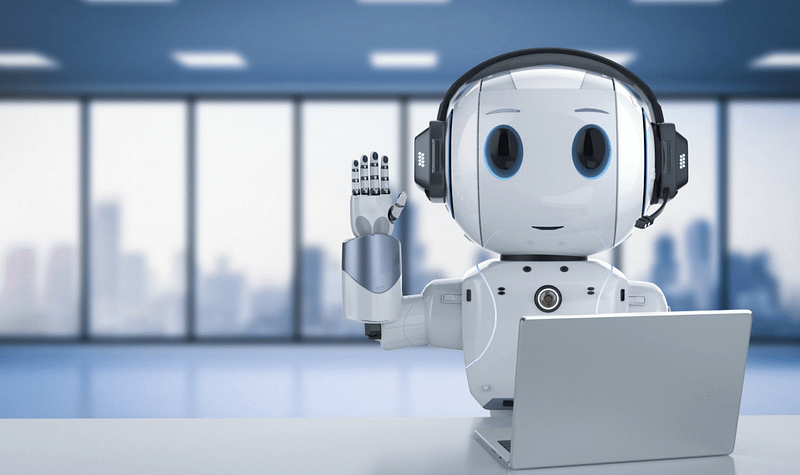
The evolution of artificial intelligence (AI) has paved the way for several remarkable advancements. From self-driving cars to personalized recommendations, AI has touched various sectors, creating groundbreaking improvements. A significant domain where AI has shown immense potential is in the creation of conversational bots or chatbots. These AI-powered virtual assistants have drastically changed our interaction with digital systems, making it more user-friendly, personalized, and efficient.
But how do we ensure these chatbots function optimally and maintain their efficacy in the face of evolving user needs? Enter FLAIR, an innovative framework designed to keep conversational bots in check and continually improve their performance.
Unveiling FLAIR: A Cutting-Edge Framework for Conversational Bots
FLAIR, or Flexible Language Acquisition and Interaction Representation, is a revolutionary framework that revolutionizes the way we interact with conversational bots. It combines various facets of natural language processing, machine learning, and human-computer interaction to create an intelligent, adaptable system for managing and improving chatbot performance.
This novel framework introduces a holistic approach to designing, implementing, and refining conversational bots. It focuses on achieving flexible language acquisition, enhancing the interaction representation, and ensuring the bots’ effective operation in a dynamic environment.
But what exactly is FLAIR, and how does it enhance the functioning of conversational bots? Let’s delve deeper to understand the core components of FLAIR and its operation.
Exploring FLAIR: Core Components and Operation
FLAIR is a multi-faceted framework that encapsulates several critical elements. It is composed of the following fundamental components:
Language Acquisition
Language acquisition forms the bedrock of any conversational bot. FLAIR enhances this acquisition process, ensuring that the bot effectively learns and evolves its understanding of human language. It incorporates advanced machine learning techniques to enable the bot to comprehend complex linguistic structures, semantics, and nuances.
Interaction Representation
Interaction representation is another critical element of FLAIR. It focuses on how the conversational bot processes and understands user interactions. FLAIR uses a flexible approach, allowing the bot to adapt its interaction representation based on the specific user, context, or application.
Dynamic Environment Adaptation
FLAIR recognizes that user needs and contexts are not static — they continuously change and evolve. Thus, it equips conversational bots with the capability to adapt to dynamic environments. FLAIR-enabled bots can learn from past interactions, analyze real-time data, and anticipate future user needs, making them highly adaptable and efficient.
Now that we’ve explored the core components of FLAIR, let’s understand how it operates to improve the performance of conversational bots.
FLAIR operates in a cyclical manner, with each cycle composed of four stages:
Observation
During the observation stage, FLAIR collects data about the conversational bot’s interactions. This data includes information about the bot’s responses, user feedback, and the context of the interaction.
Analysis
The collected data is then analyzed to identify patterns, trends, and anomalies. FLAIR uses advanced analytical techniques to extract valuable insights from the data and understand the bot’s performance and user needs better.
Adaptation
Based on the insights obtained from the analysis, FLAIR then adapts the conversational bot. This adaptation could involve modifying the bot’s language acquisition model, altering its interaction representation, or refining its learning algorithms.
Evaluation
Finally, FLAIR evaluates the effectiveness of the adaptations. It assesses whether the changes have improved the bot’s performance and whether further adaptations are needed. This evaluation forms the basis for the next observation stage, leading to a continuous cycle of improvement.
FLAIR in Action: Revolutionizing Conversational Bots
The implementation of FLAIR can have far-reaching implications for conversational bots. By enabling bots to learn, adapt, and improve continuously, FLAIR can significantly enhance the efficacy and user experience of these virtual assistants.
Moreover, FLAIR’s flexible and adaptable nature makes it an ideal solution for diverse applications. Whether it’s a customer service bot handling queries, a personal assistant scheduling meetings, or a healthcare bot providing health advice, FLAIR can revolutionize their performance.
But how does FLAIR achieve this? Let’s look at some of the key benefits of implementing FLAIR:
Enhanced User Understanding
FLAIR enables conversational bots to better understand users. It equips them with the ability to comprehend complex language structures, interpret various semantics, and recognize subtle linguistic nuances. As a result, the bots can interact with users more effectively and provide more accurate and relevant responses.
Improved Adaptability
FLAIR makes conversational bots more adaptable. By continuously learning from interactions and adapting their models, these bots can cater to changing user needs and dynamic environments. They can handle unforeseen situations, adapt to different contexts, and anticipate user needs, leading to improved user satisfaction.
Continuous Improvement
FLAIR ensures that conversational bots keep getting better. By implementing a continuous cycle of observation, analysis, adaptation, and evaluation, FLAIR ensures that these bots constantly learn, evolve, and improve. This continuous improvement translates into superior performance, increased efficiency, and a better user experience.
In conclusion, FLAIR heralds a new era in the world of conversational bots. By enhancing their understanding, adaptability, and continuous improvement, FLAIR paves the way for the creation of intelligent, efficient, and user-centric conversational bots. As we continue to embrace AI and its various applications, frameworks like FLAIR will play an instrumental role in shaping a future where our interactions with digital systems are more seamless, personalized, and rewarding.
Find more … …
ChatGPT and the Intelligence Revolution: Shaping the Future of AI
Machine Learning for Beginners in Python: How to Add Interaction Terms in Linear Regression